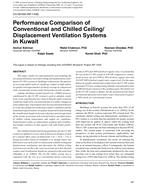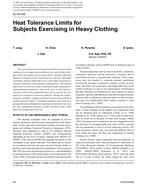-
-
Available Formats
- Options
- Availability
- Priced From ( in USD )
-
Available Formats
-
- Immediate download
- $16.00
- Add to Cart
Customers Who Bought This Also Bought
-

CH-09-062 -- Stability of Temperature Control in VAV Systems
Priced From $16.00 -

CH-09-059 (RP-1438) -- Performance Comparison of Conventi...
Priced From $16.00 -

CH-09-048 -- Heat Tolerance Limits for Subjects Exercisin...
Priced From $16.00 -

CH-09-046 (RP-1182) -- Field Testing Residential Fan-Assi...
Priced From $16.00
About This Item
Full Description
Adaptive thermal comfort criteria for building occupants are now becoming established. In this paper we illustrate their use in the prediction of occupant behaviour and make a comparison with a non-adaptive temperature threshold approach. A thermal comfort driven adaptive behavioral model for window opening is described and its use within dynamic simulation illustrated for a number of building types. Further development of the adaptive behavioral model is suggested including use of windows, doors, ceiling fans, night cooling, air conditioning and heating, also the setting of opportunities and constraints appropriate to a particular situation. The integration in dynamic simulation of the thermal adaptive behaviors together with non-thermally driven behaviors such as occupancy, lights and blind use is proposed in order to create a more complete model of occupant behavior. It is further proposed that this behavioral model is implemented in a methodology that includes other uncertainties (e.g. in internal gains) so that a realistic range of occupant behaviors is represented at the design stage to assist in the design of robust, comfortable and low energy buildings.
Units: SI





